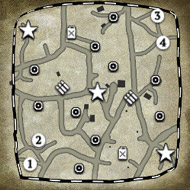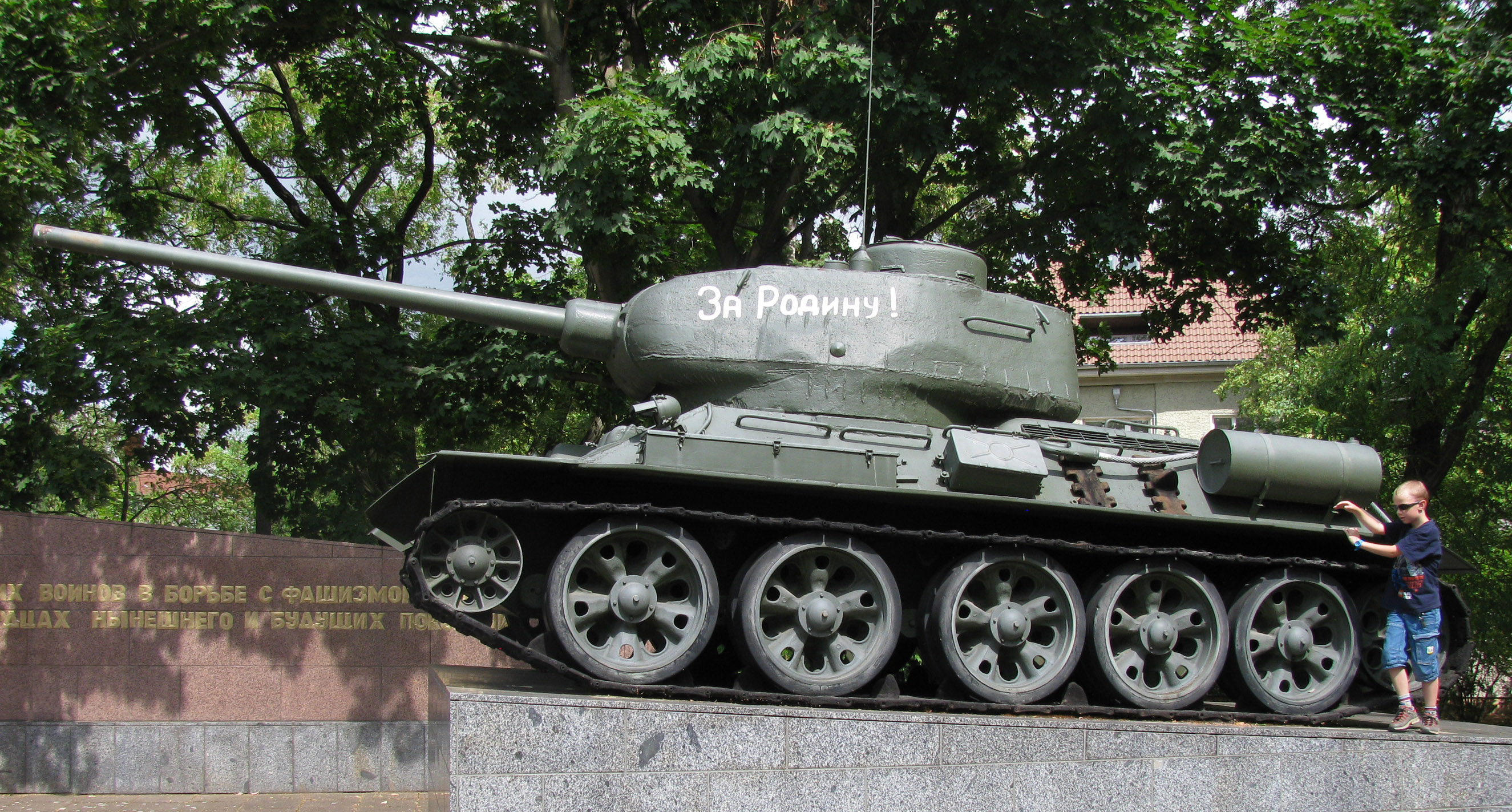
Outside of the Museum entrance is a T-34-85 Model 1969 tank on a pedestal, that has been adorned with the "ЗА РОДИНУ" graphitti on its turret ("For Mother Russia!").
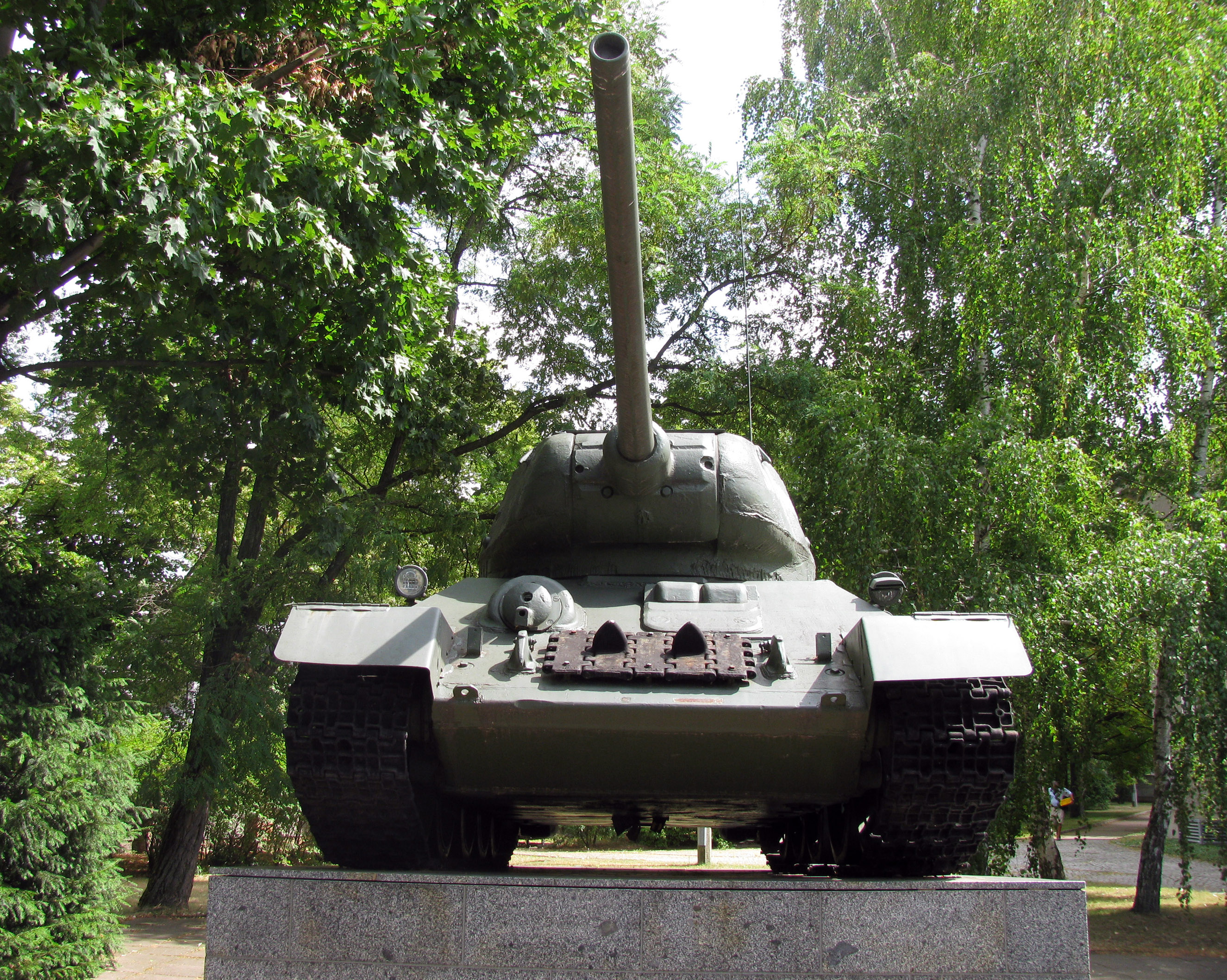
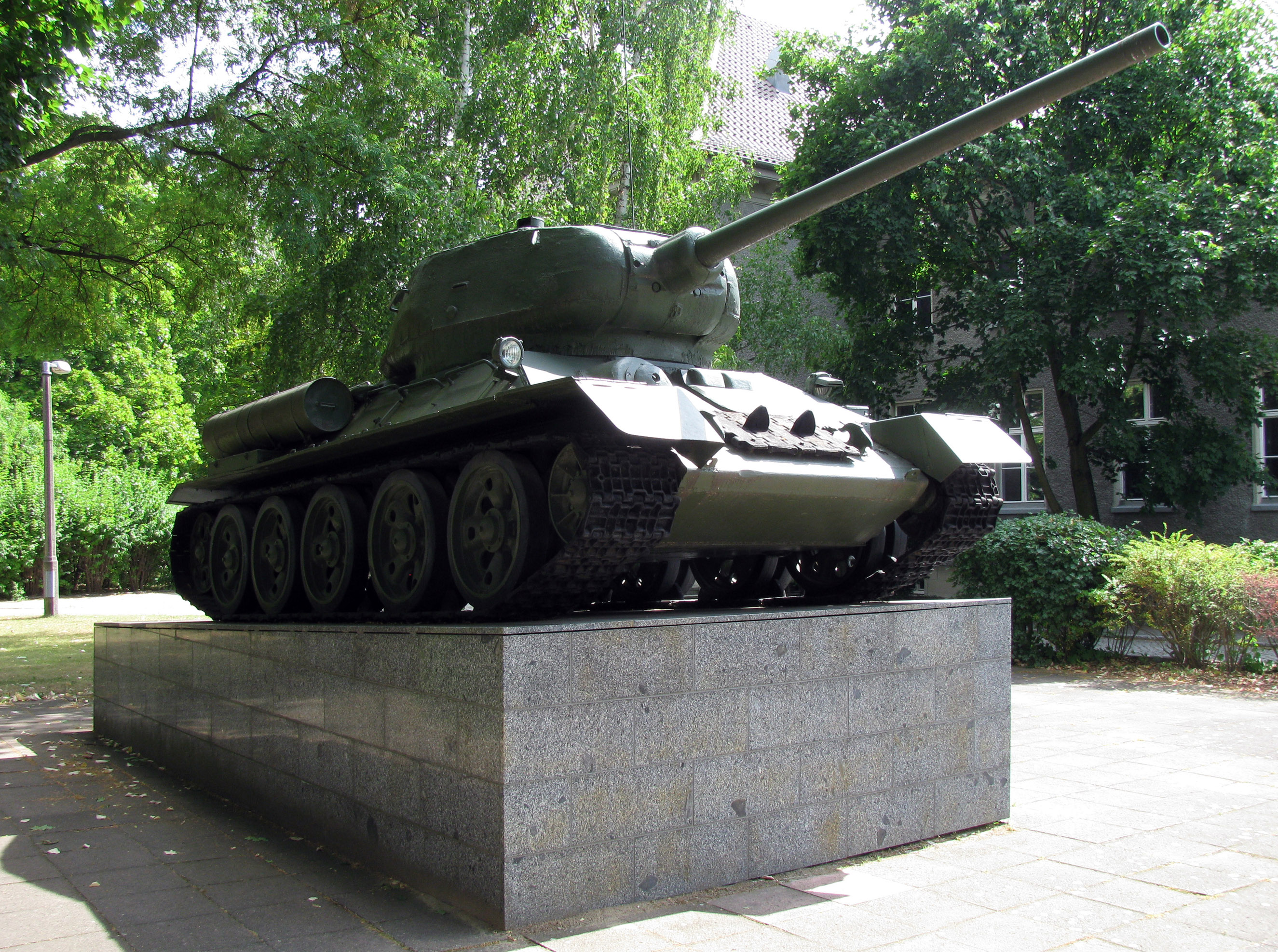
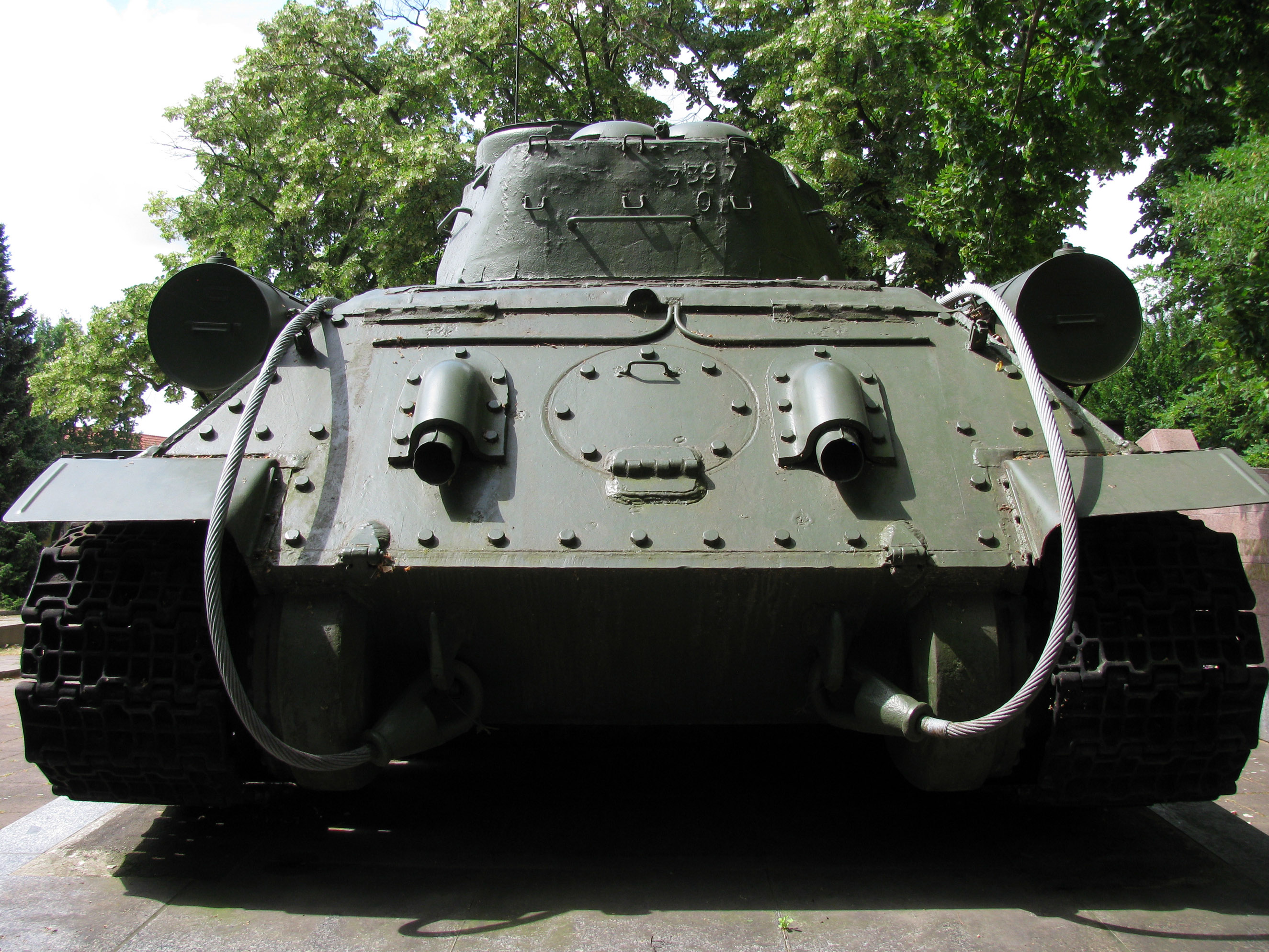
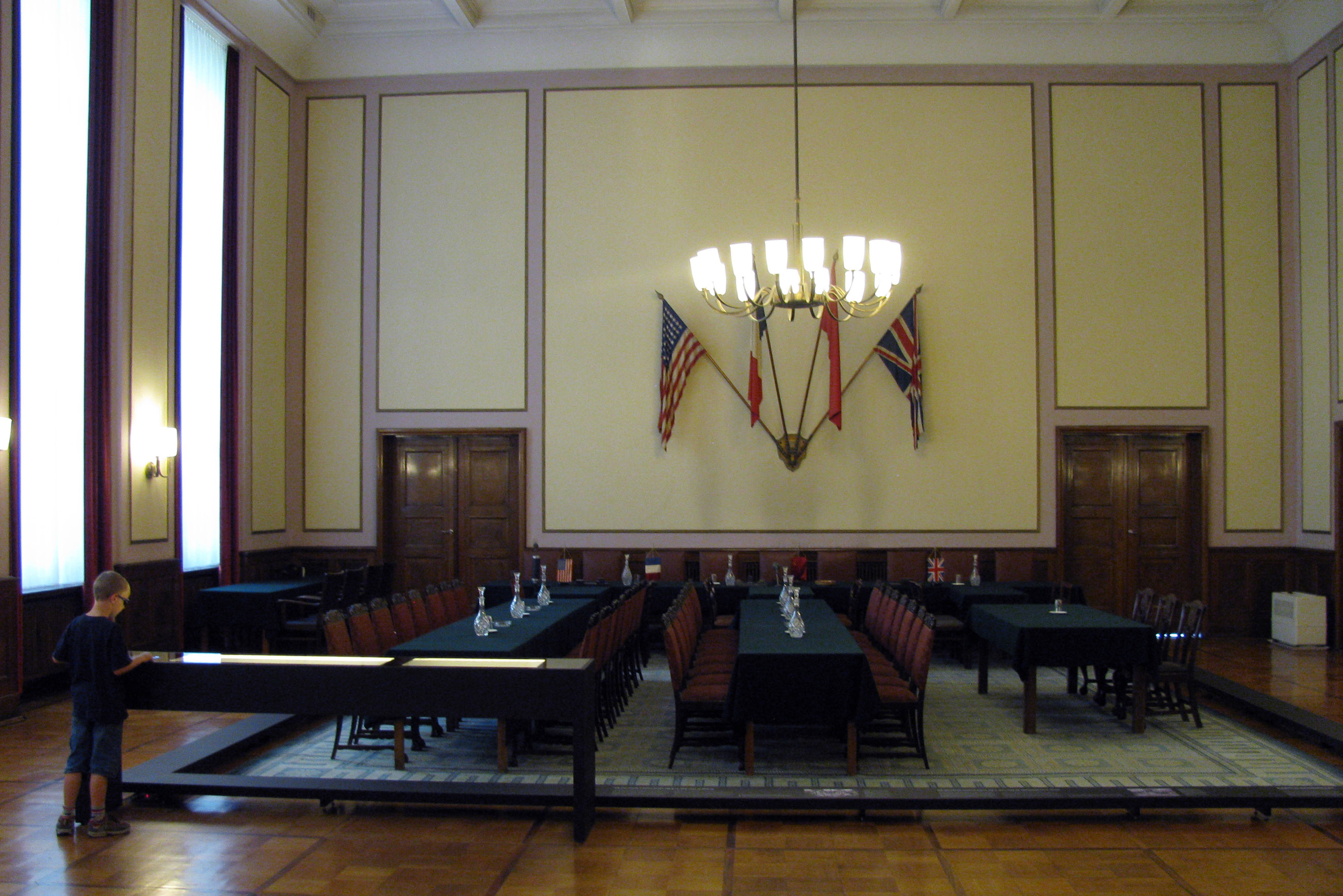
The centerpiece of the Museum is the surrender room. It was here that the "German Instrument of Surrender" was signed and witnessed. The participants included Marshal Georgy Zhukov on behalf of the Supreme High Command of the Red Army (Soviet Union), Air Chief Marshal Arthur William Tedder, as Deputy Supreme Commander of the Allied Expeditionary Force (United Kingdom), General Carl Spaatz, Commanding United States Strategic Air Forces, as witness, General Jean de Lattre de Tassigny, Commanding First French Army, as witness, and Field Marshal Wilhelm Keitel as the Chief of the General Staff of the German Armed Forces (Oberkommando der Wehrmacht) and as representative of the army (Wehrmacht Heer).
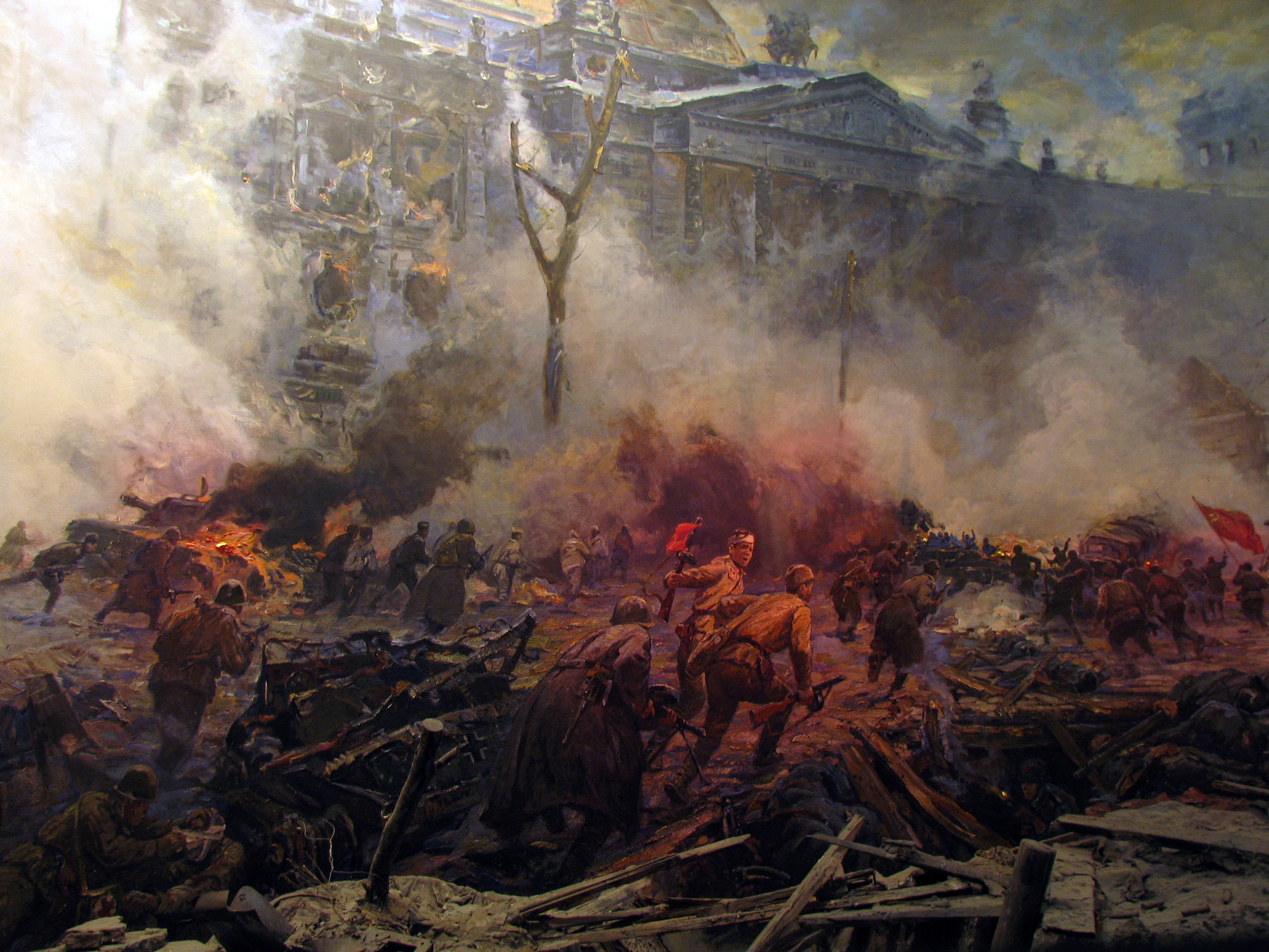
Adjacent to the surrender room is a large "diorama", which is part Trompe-l'œil and part physical debris, barb wire, and shell casings, depicting the final siege on the Reichstag. Only about a third of the room is shown in this picture.
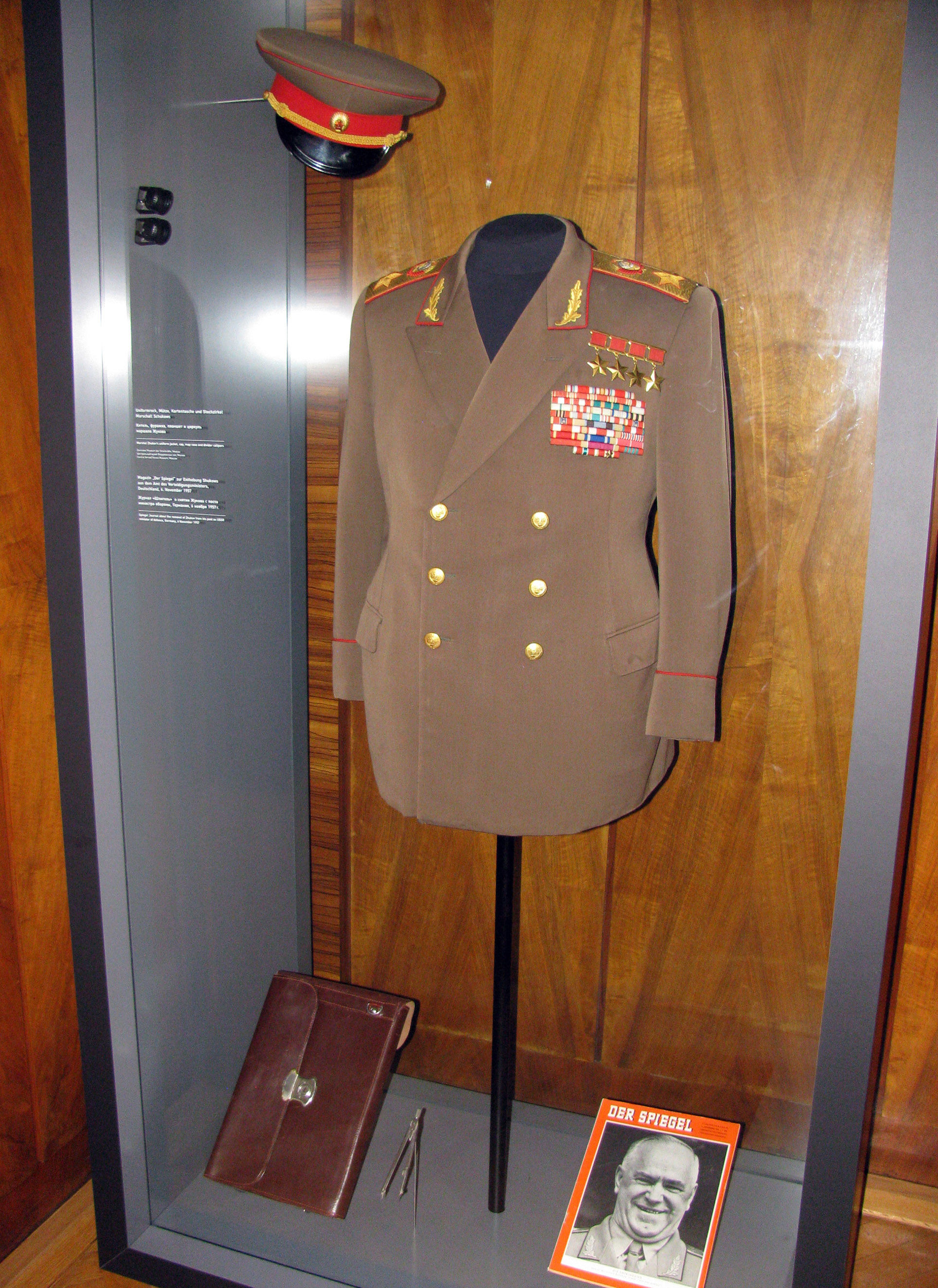
My son's favorite exhibit was this authentic uniform that was worn by Marshal Zhukov. At the bottom, one can see the Marshal's map calipers, and an issue of "Der Spiegel" that featured him on its cover.
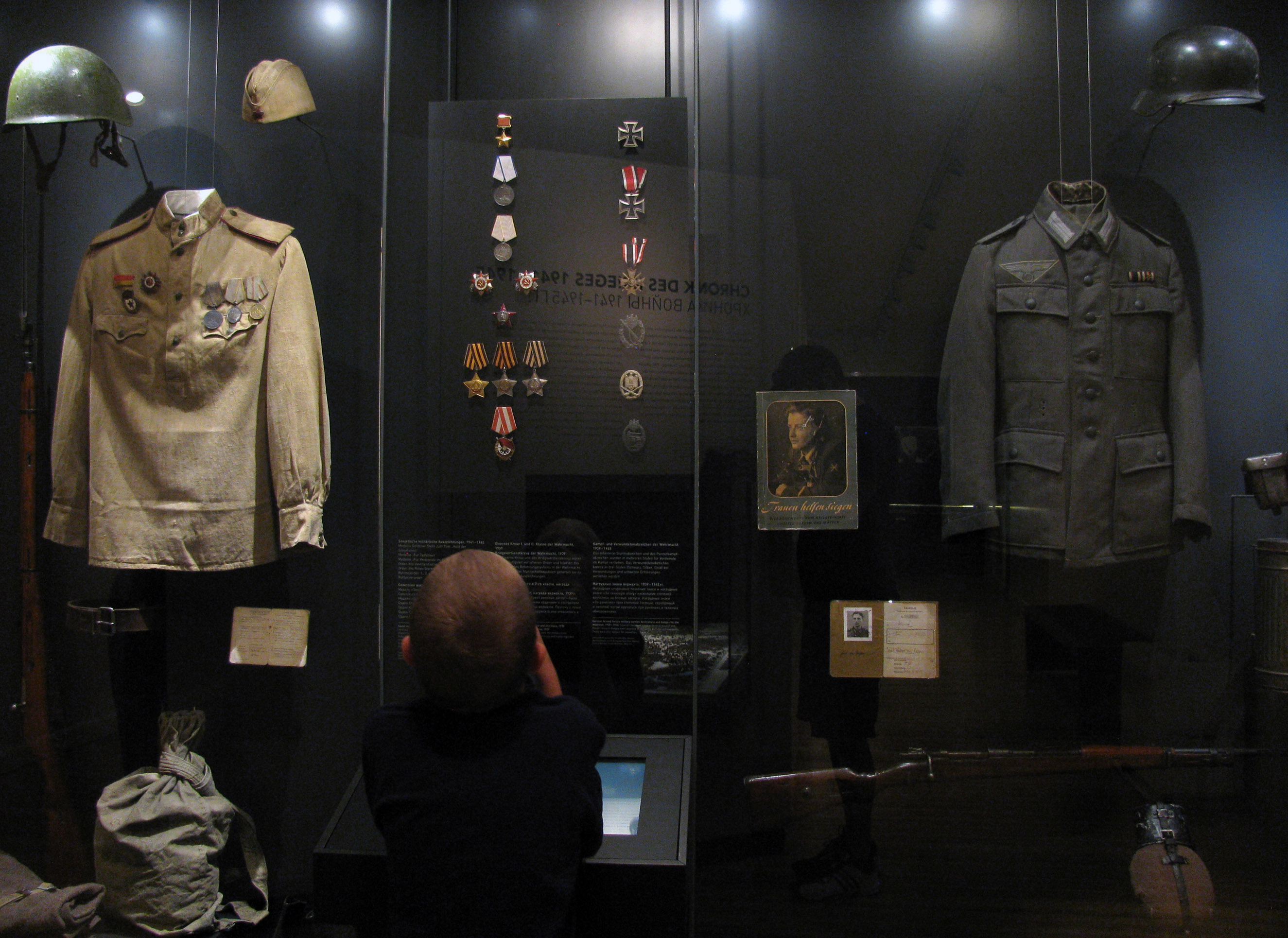
The upstairs exhibition begins with uniforms of common soldiers from both sides of the conflict, with the Soviet Red Army represented on the left and German Wehrmacht represented on the right. In the middle are various medals that could be earned in action.
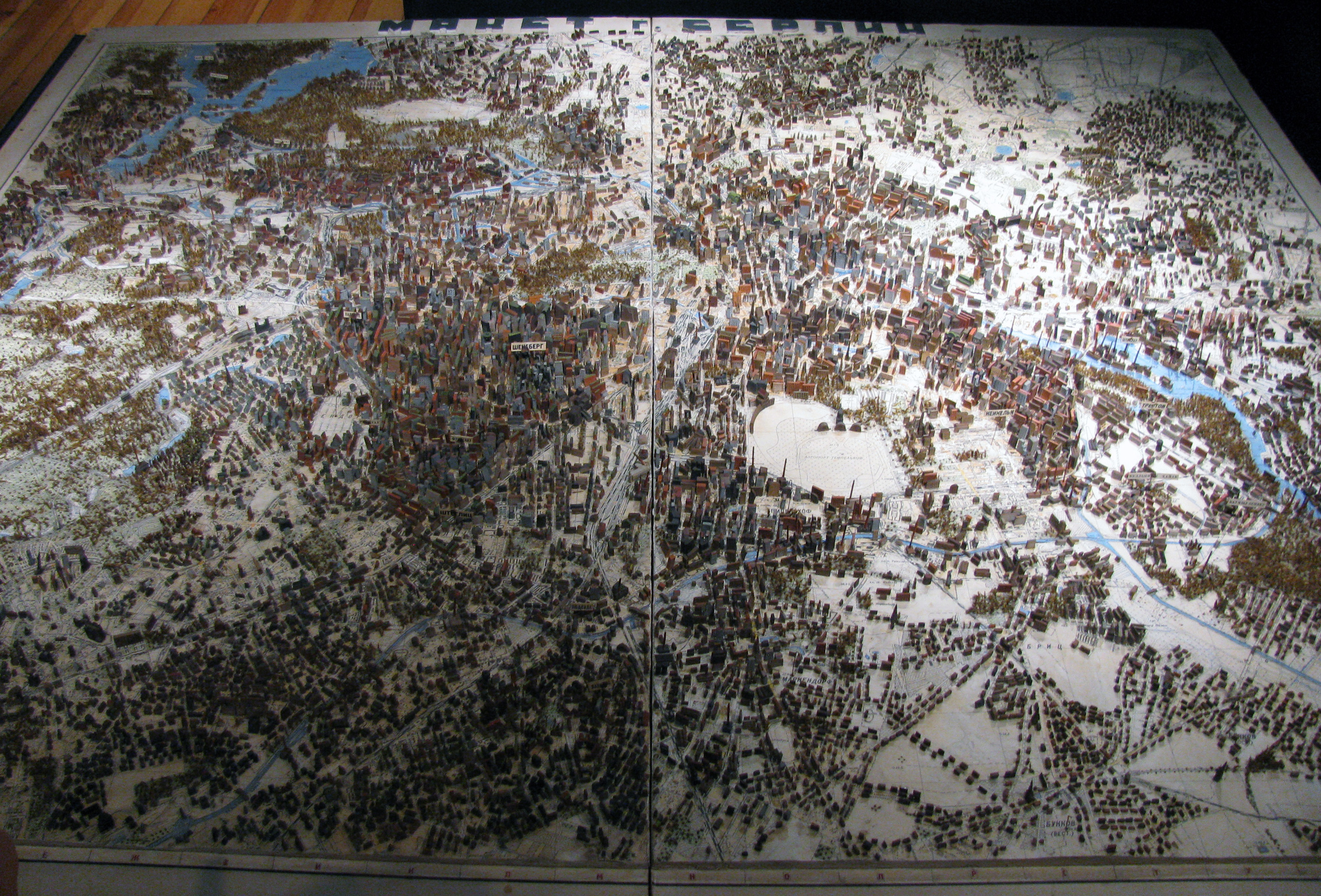
This gigantic map of Berlin was adorned with tiny wooden houses to represent the structures of Berlin before its downfall in 1945.
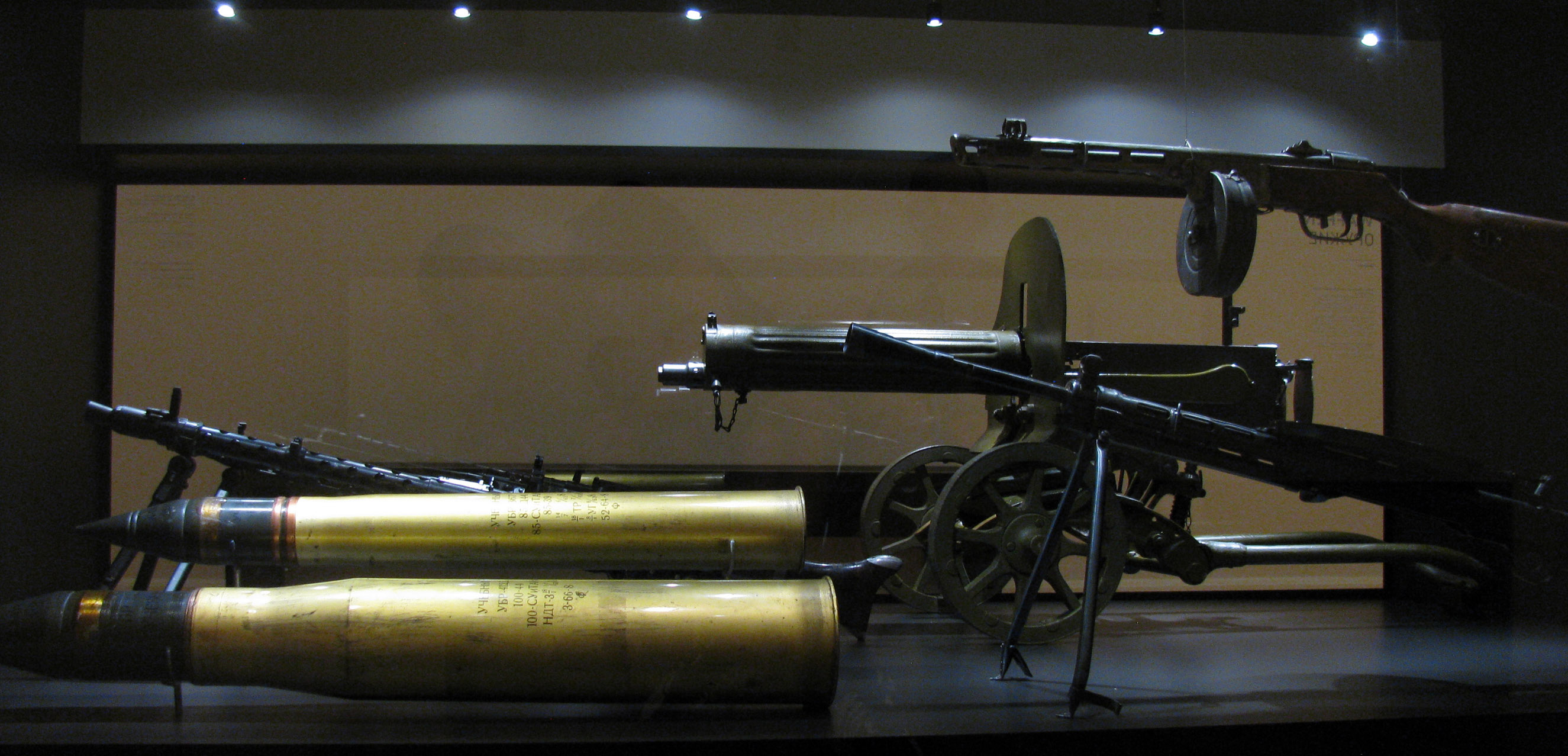
A display of arms; including the MG-34 LMG (left rear), the PPSh-41 (right hanging), the Maxim MG PM M1910 (right rear), the DP-27 (right front), and two massive Russian artillery shells.
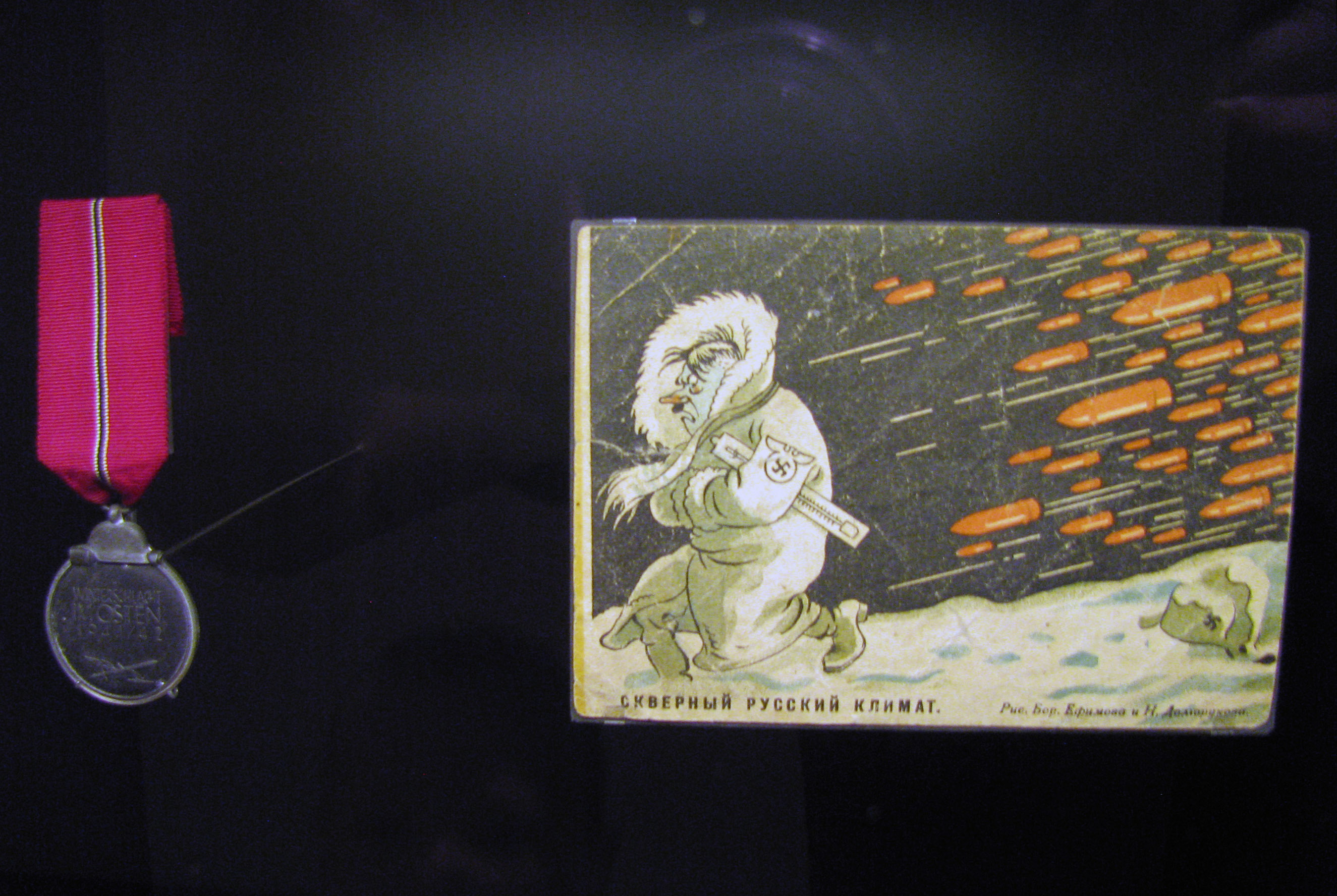
Most of the museum is quite somber, and entire rooms are dedicated to showing the atrocities that were committed during World War II, but these little treasures offered a small amount of comic relief. On the left is a medallion that a German Wehrmacht soldier could win by simply surviving the Winter of 1941-42, and on the right is a propoganda-style postcard that says something along the lines of "Hitler doesn't like the Russian Winter."
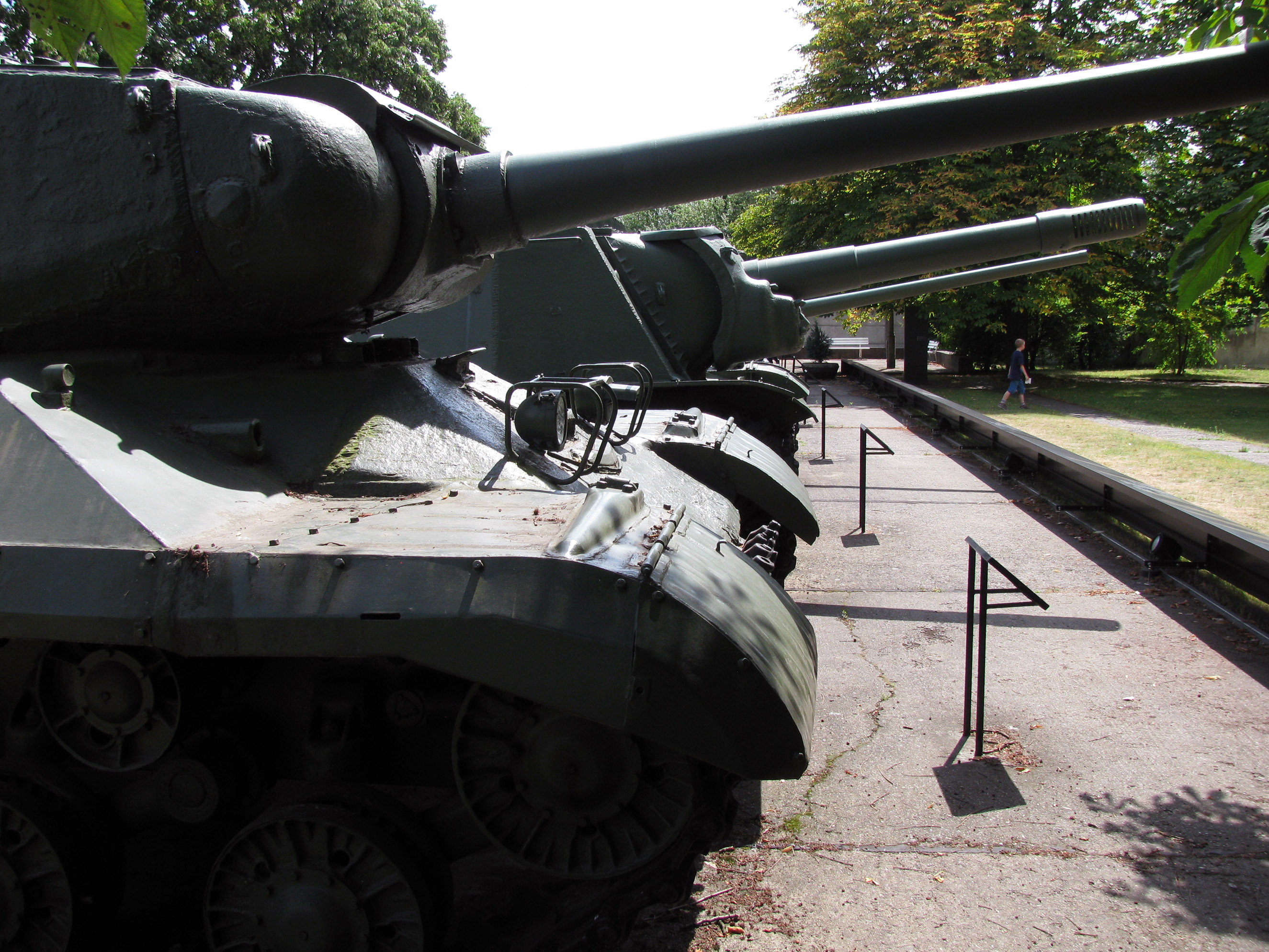
My favorite part of the Museum was the collection of Soviet arms that is stationed out back. In the foreground is the mighty IS-2.
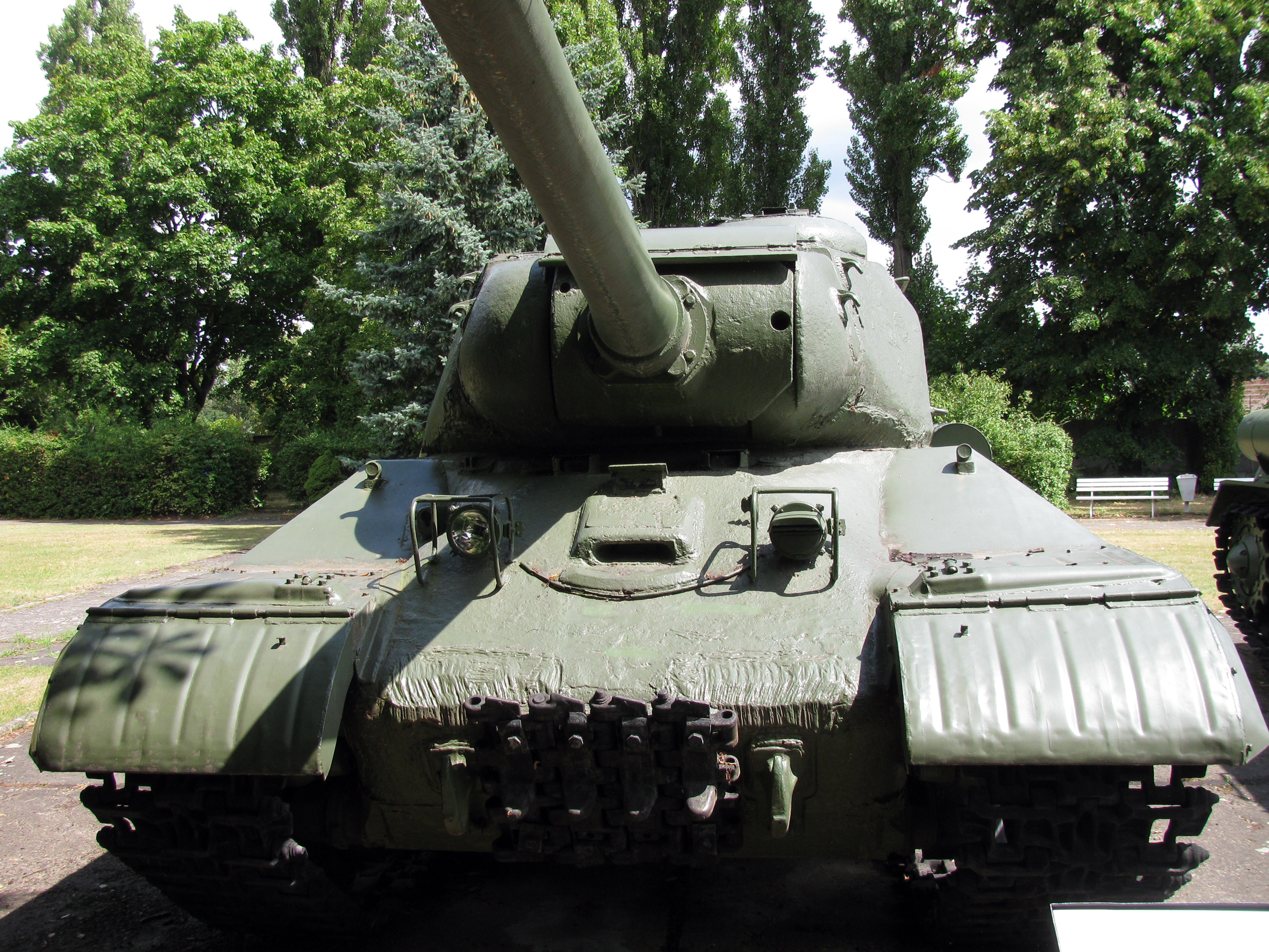
The placard reads:
Heavy battle tank IS-2m
- Crew: 4 people (commander, driver, gunner, loader)
- Weapons: 122mm gun with 28 rounds of ammunition, three 7.62mm machine guns, one 12.7mm machine gun
- Maximum firing range: 13,500 meters
- Maximum speed: 37 km/h
- Weight: 46 tons
The IS-2m tank (IS for "Iosip Stalin") is a heavy battle tank developed in 1943 to oppose the German "Tiger" tank. It was constructed in December 1944 in Chelyabinsk in the Urals and accompanied the Red Army to Berlin in 1945. It was modernized in the 1950s.
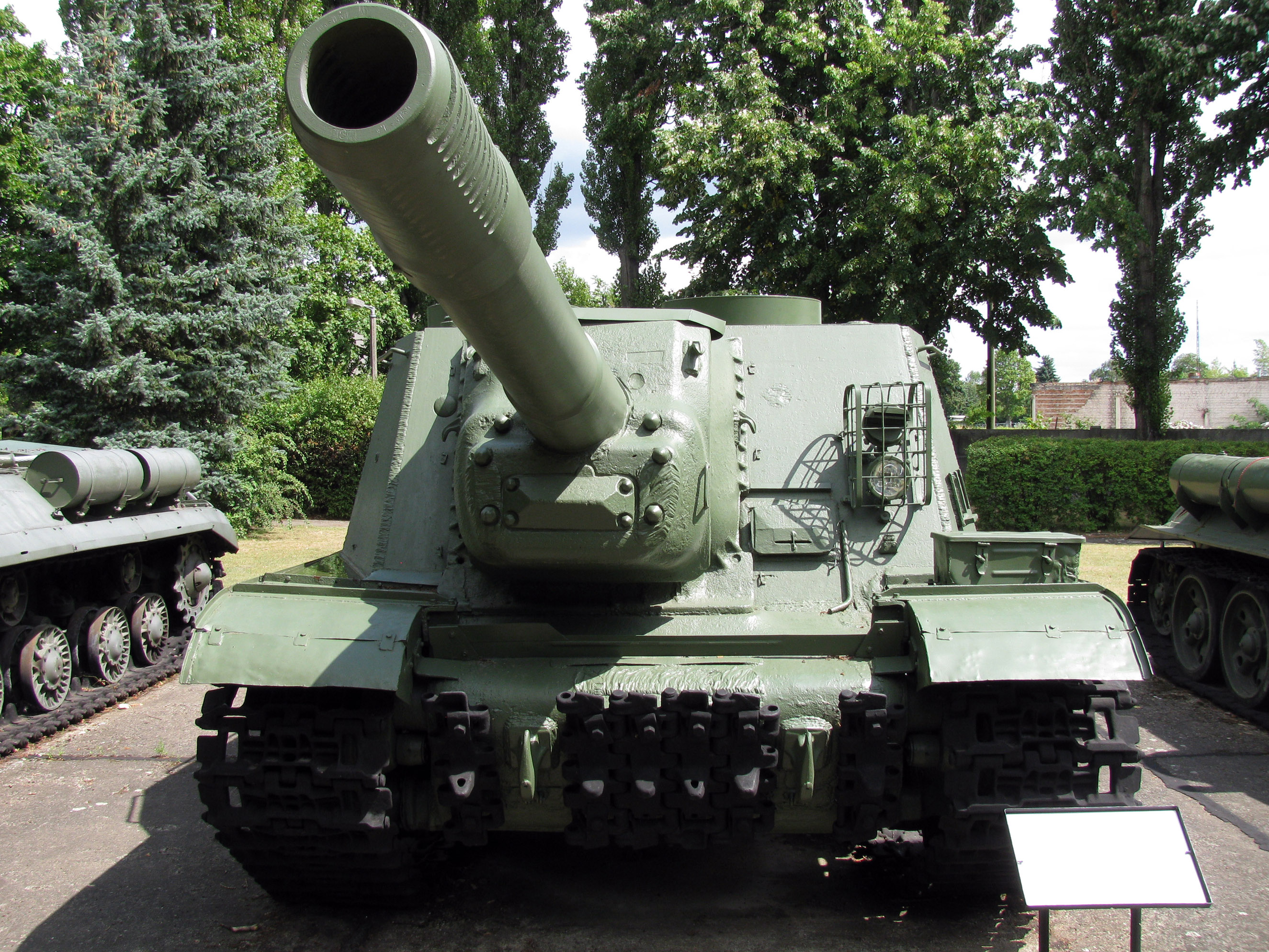
Self-propelled gun carriage ISU-152
- Crew: 5 people (commander, driver, gunner, loader, breech operator)
- Weapons: 152mm howitzer with 20 rounds of ammunition
- Maximum firing range: 6,200 meters
- Maximum speed: 37 km/h
- Weight: 46 tons
A self-propelled gun carriage is an artillery gun mounted on a motorized chassis. It can be moved without recourse to an artillery tractor or draft animal. The short gun barrel, typical of howitzers, propels high-caliber ammunition of great destructive power. The ISU-152 shown here was constructed in April 1944 in Chelyabinsk and heavily damaged at least once during the war.
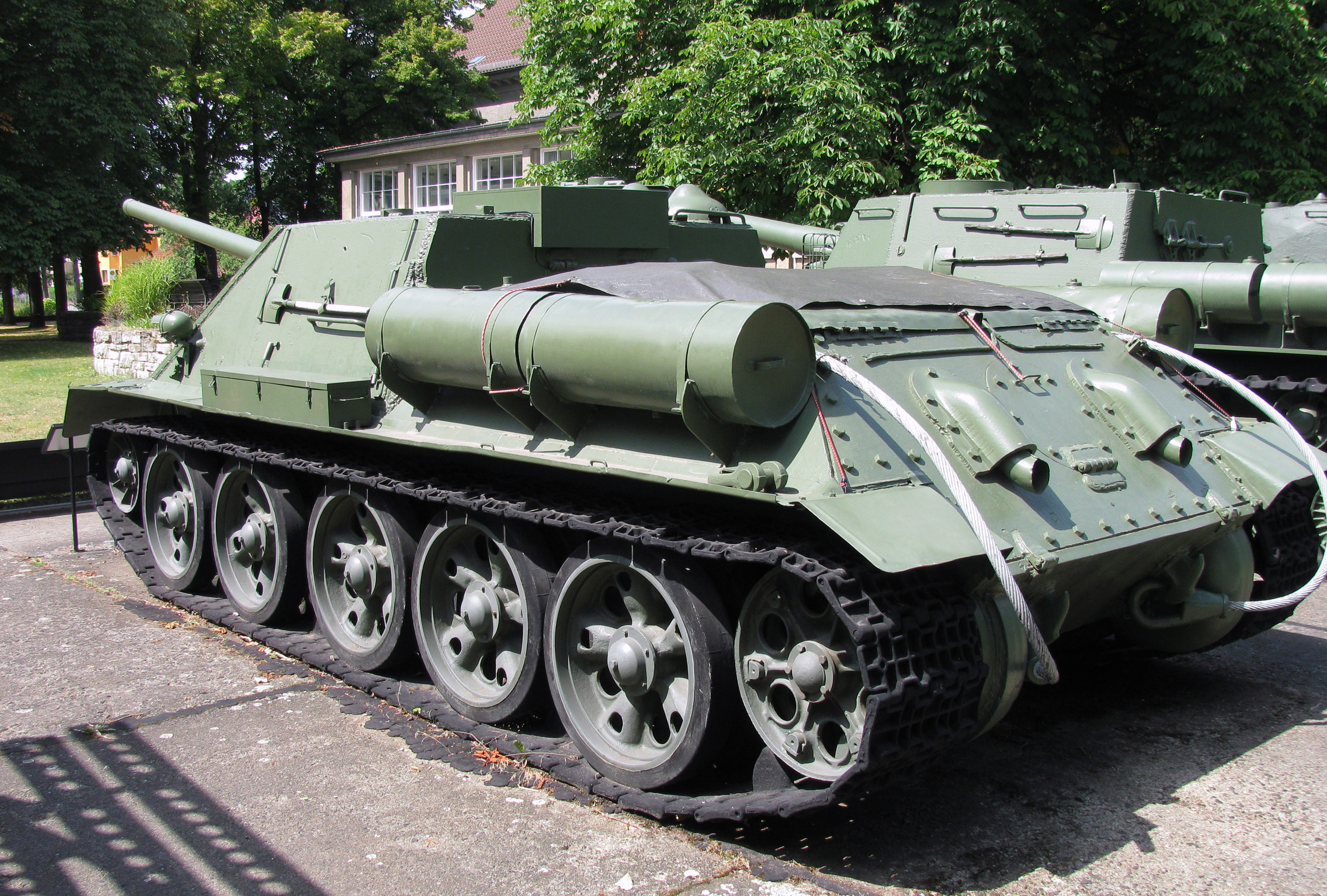
Self-propelled gun carriage SU-100
- Crew: 4 people (commander, driver, gunner, loader)
- Weapons: 100mm gun with 34 rounds of ammunition
- Maximum firing range: 15,400 meters
- Maximum speed: 50 km/h
- Weight: 32 tons
Technically, the SU-100 is based on the T-34 tank chassis. Its high shooting power comes from its long barrel; all conventional tanks of the time could be destroyed even at a distance of 1,000 meters. Since the SU-100 could advance rapidly, it was also used to pursue and attack tanks. The SU-100 on display here was constructed in Sverdlovsk in the Urals.
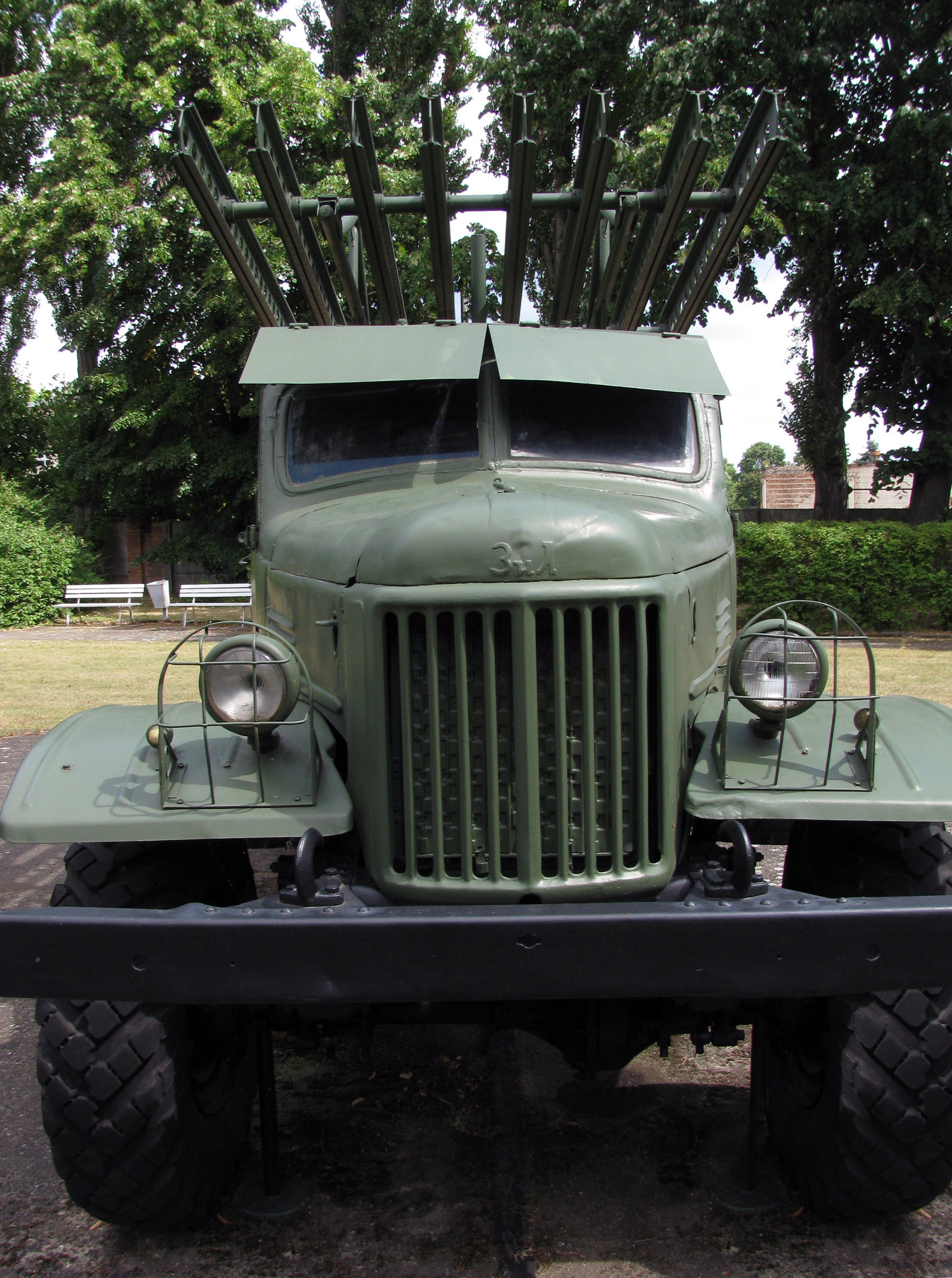
Multiple rocket launcher BM-13
- Caliber: 132mm
- Crew: 7 people (commander, driver, gunner, 4 breech operators)
- Firing rate: one round with 16 shots
- Maximum firing range: 8,500 meters
The BM-13 is a multiple rocket launcher that can fire 16 rounds within a few seconds. Because the rockets were operated from racks of parallel rails and also developed a distinctive howling sound, Wehrmacht soldiers called them "Stalin's organs." The Red Army gave them the name "Katyusha." The simple firing mechanism allowed them to be easily mounted on truck beds. When combined with the all-terrain "Studebakers" that the Red Army received in the form of U.S. military aid, the BM-13 was highly mobile. The model on display is mounted on a Soviet ZiS 151 general-purpose truck of postwar production.
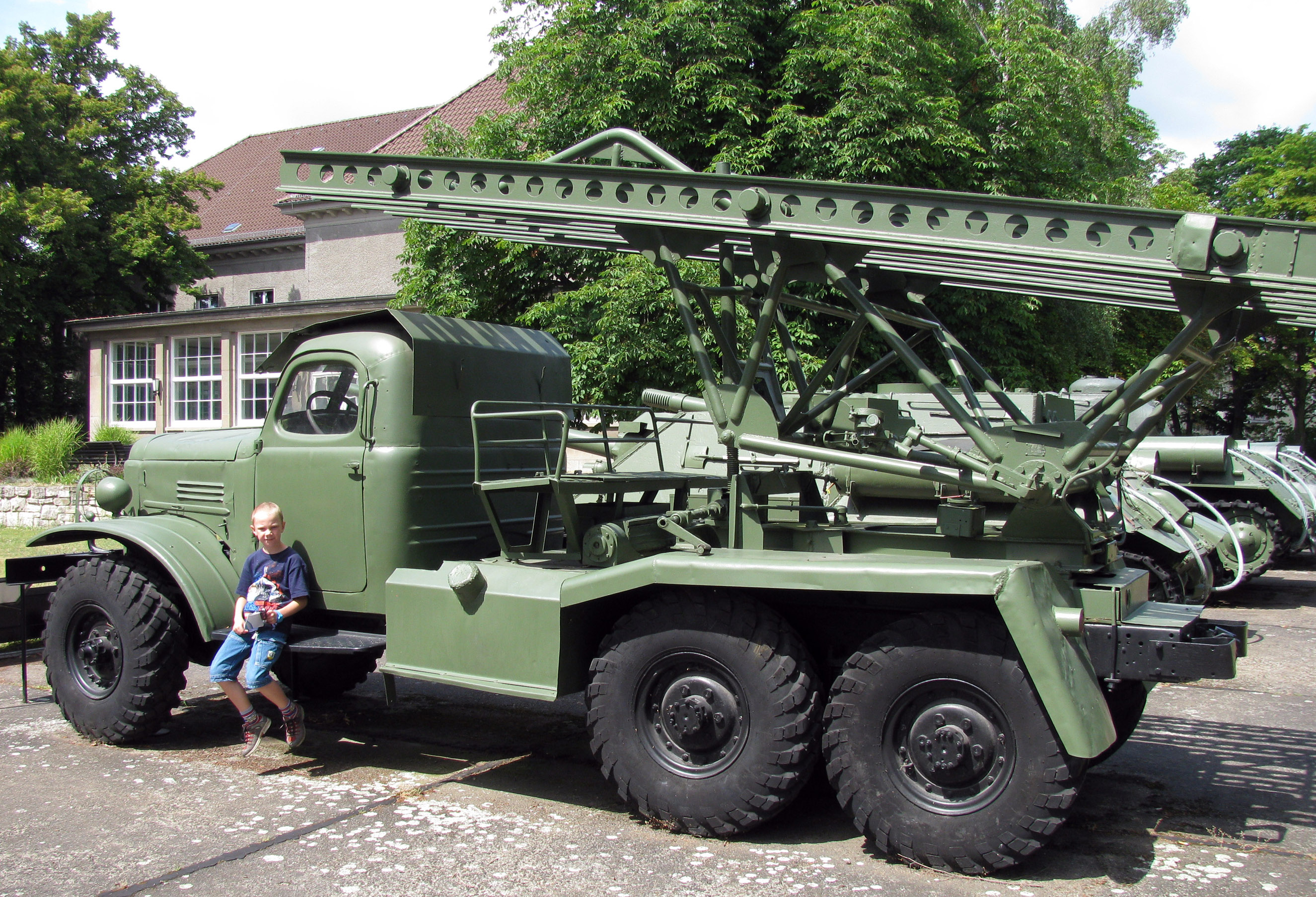
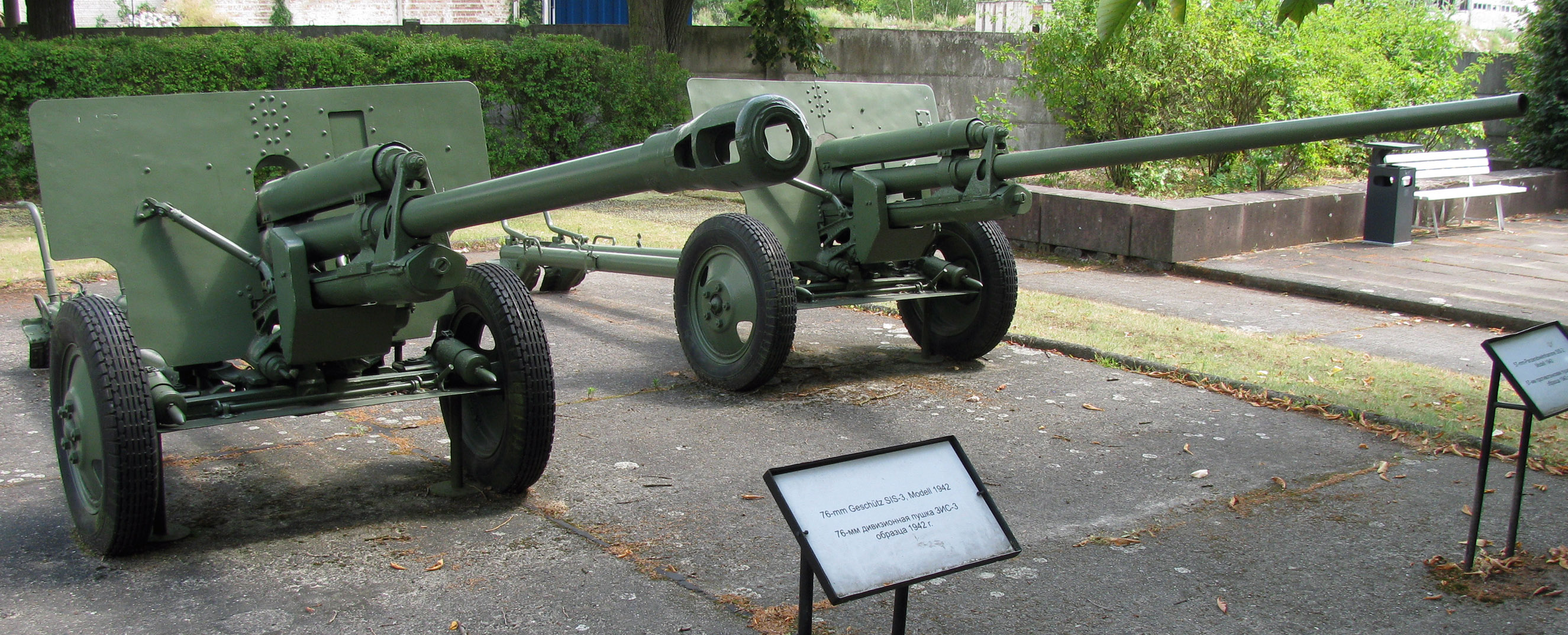
The museum featured three guns. Shown here is the 76mm ZIS-3 Model 1942 (foreground) and the 57mm "Panzerbuster" ZIS-2 (background).
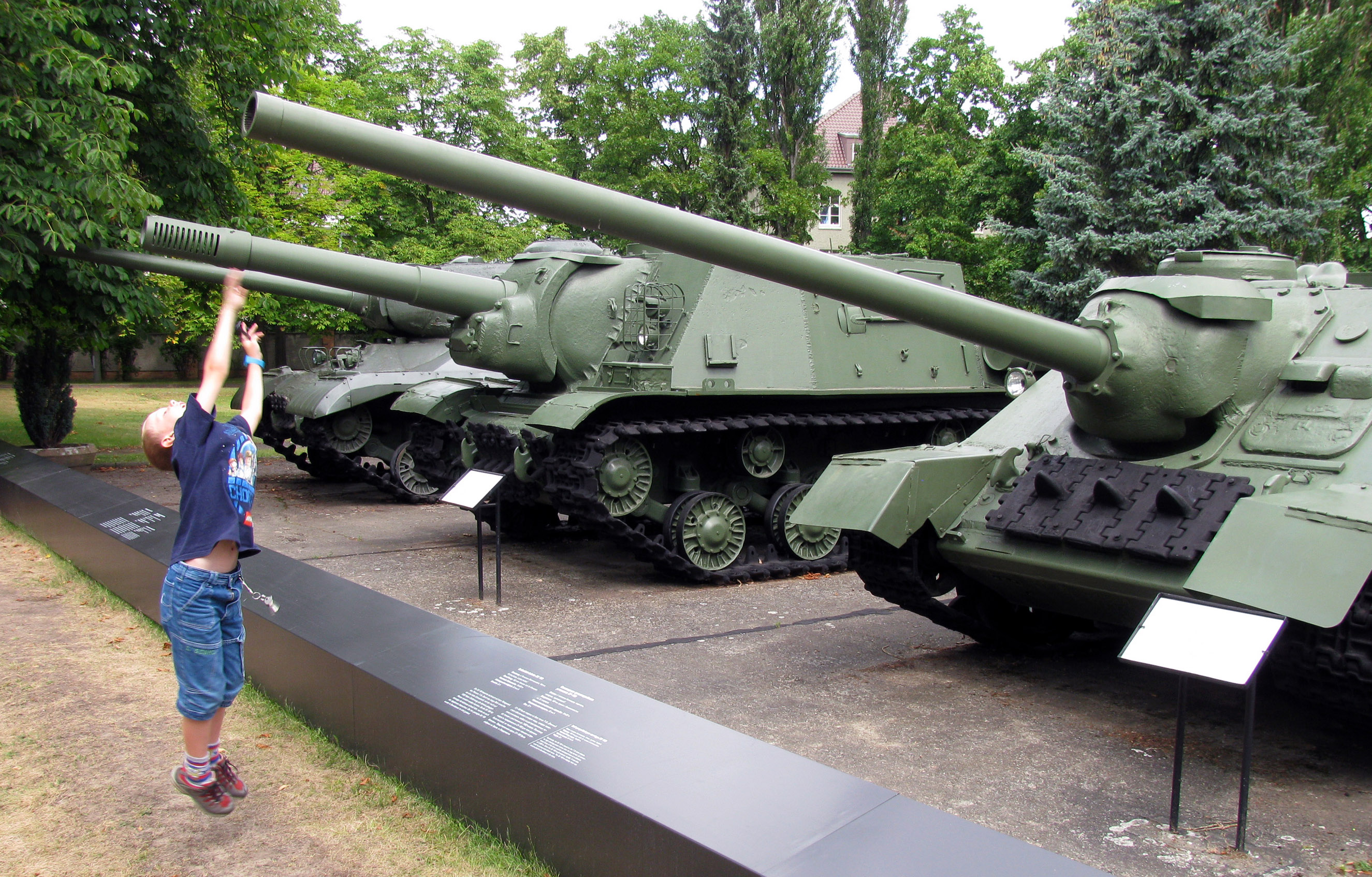
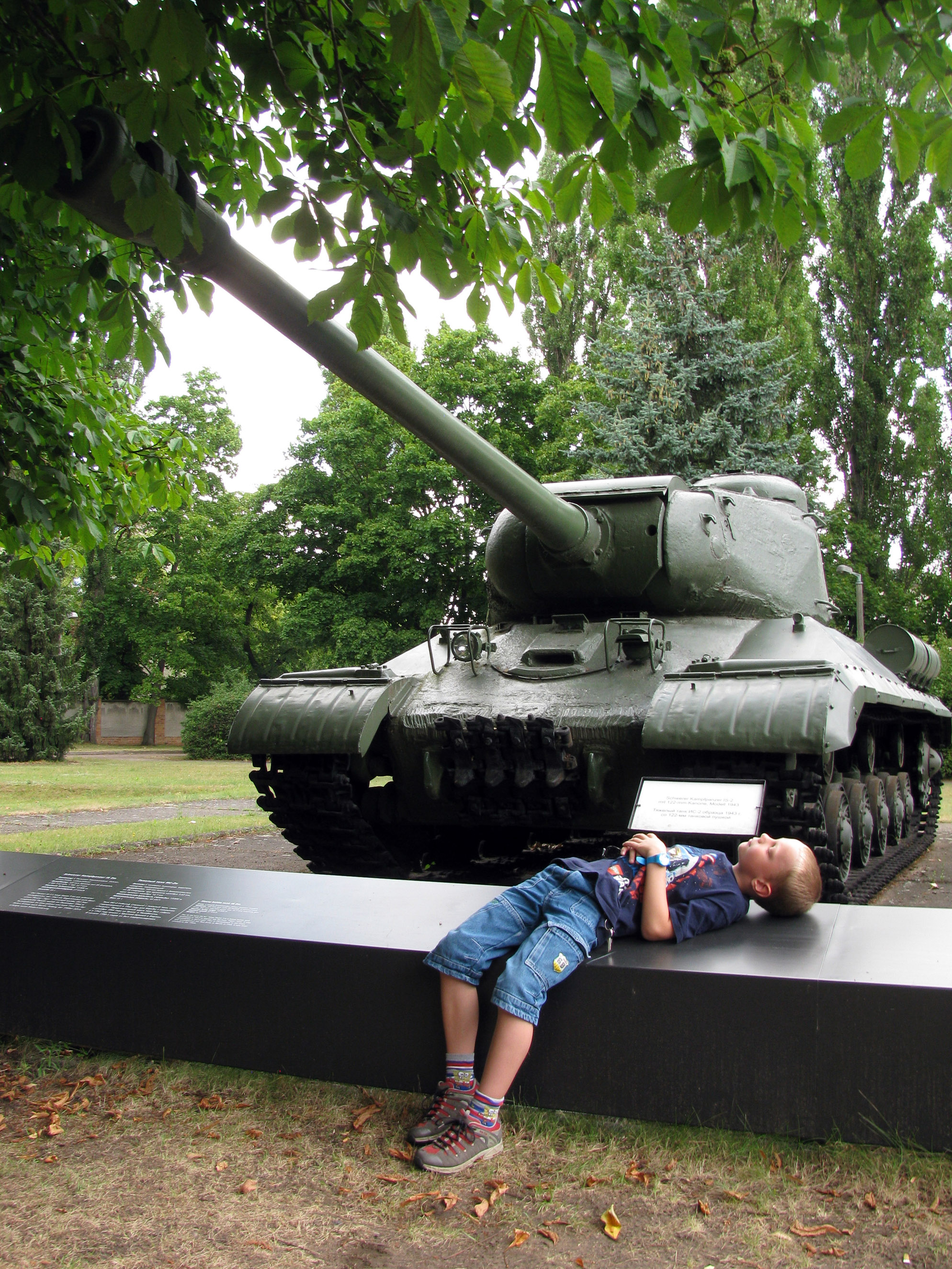
My son relaxing on peaceful day, the IS-2 looming over him, its barrel pushing into the leaves of a nearby tree. He had a lot of questions and I tried to answer them as fairly and objectively as I could, which is sometimes not an easy task. I'm sure I'll be filling in details, as well as passing down some family history, as he grows older.
I hope you enjoyed this blog post about the Deutsch-Russisches Museum Berlin-Karlshorst. If you visit Berlin, I recommend it highly. Please let me know what you think in the comments!















 cblanco ★
cblanco ★  보드카 중대
보드카 중대  VonManteuffel
VonManteuffel  Heartless Jäger
Heartless Jäger 